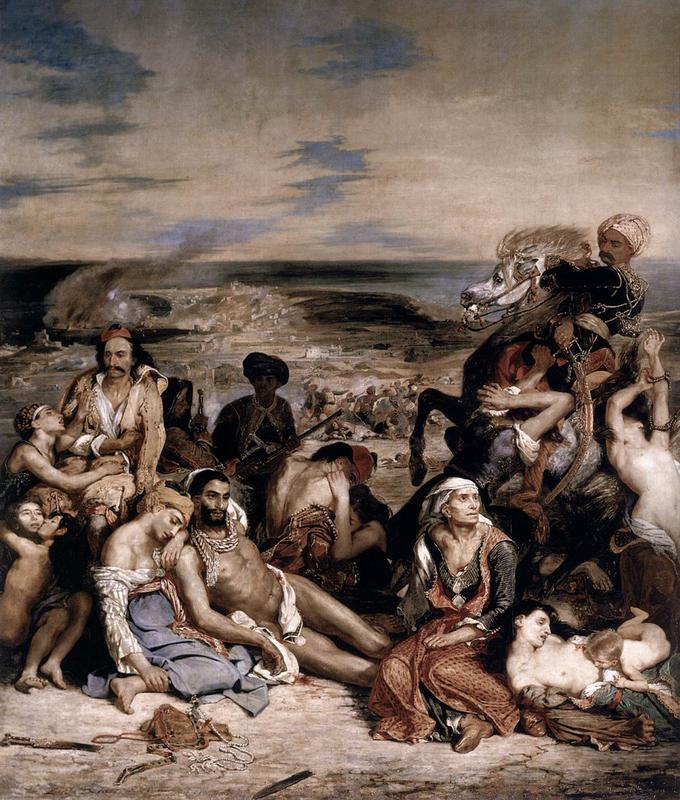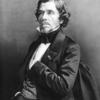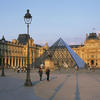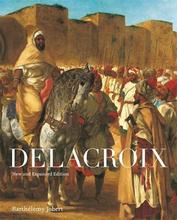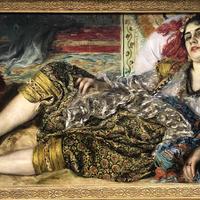More about The Massacre at Chios
- All
- Info
- Shop

Contributor
The Greek Island of Chios may be a popular vacation spot in the twenty-first century, but back in the 1800s, the island was victim to the incredible violence of the Greek War of Independence from the Ottoman Empire in 1822.
Don’t let this island’s pristine beaches fool you, The Massacre at Chios by Eugène Delacroix demonstrates the extreme violence the island’s natives suffered during their fight for independence.
Hating on the Ottoman Empire was almost a spectator sport in Europe so when Greece decided to rise up and fight Ottoman occupation of their country, Europeans gladly supported the Greeks in order to remove all traces of Muslim society out of Greece. Delacroix, like many Europeans of the time, was invested in the war, reading about the fight in newspapers and hearing about the war from eyewitness accounts. Although this painting may not be seen by us as a political statement, many see Delacroix's emotional tribute to the island as depicting a clear line in the sand - Christianity in, Islam out.
Europeans were pretty obsessed with obliterating all traces of the Ottoman Empire from Europe and unfortunately, Ottoman troops made it easy for Europeans to hate them so much. On the island of Chios alone, a population of 120,000 was wiped out in under a month all the way down to 30,000. Dude. Those unlucky 30,000 were later either starved to death or forced into slavery, kinda making the Ottoman Turkish troops the easy bad guys in many European households.
Delacroix revealed his latest painting at the 1824 Salon in Paris where it was both praised and ridiculed. As per usual, the old farts of the academy preferred stoic, heroic figures “fighting” up against the evil Ottoman Empire. Delacroix said nah and decided to depict the people who suffered greatly at the expense of their captors. But the newly appointed post-Napoleon Bourbon royal family’s art administrator, Comte de Forbin, bought the painting on behalf of the family without prior consent. Although controversial, the royal family didn’t press Forbin and the painting remained in the family. In 1874, it was transferred to The Louvre where it remains today.
Sources
- "Delacroix, Scene of the Massacre at Chios." Interview. Khan Academy(video blog). Accessed October 22, 2018. https://www.khanacademy.org/humanities/becoming-modern/romanticism/roma…
- Facos, Michelle. An Introduction to Nineteenth-Century Art. New York, NY: Routledge, 2011.
- Fraser, Elisabeth A. "Uncivil Alliances: Delacroix, the Private Collector, and the Public (Delacroix's Massacres of Chios)." Oxford Art Journal, January 21, 1998, 87-103. Accessed October 22, 2018. https://www.academia.edu/4248446/Uncivil_Alliances_Delacr
- Marlowe, Lara. "Eugène Delacroix: Reflections on a Revolution in Art." Irish Times, October 6, 2018. Accessed October 22, 2018. https://www.irishtimes.com/culture/art-and-design/visual-art/eugène-del….
- Miller, Lisa. "Chios Is The Magical Greek Island That Cures All Wanderlust." HuffPost, December 6, 2017. Accessed October 22, 2018. https://www.huffpost.com/entry/chios-greece_n_5651504.
- The Art Story Contributors. "Eugene Delacroix Most Important Art." The Art Story. Accessed October 22, 2018. https://www.theartstory.org/artist-delacroix-eugene-artworks.htm.
Featured Content
Here is what Wikipedia says about The Massacre at Chios
Scenes from the Massacre at Chios (French: Scènes des massacres de Scio) is the second major oil painting by the French artist Eugène Delacroix. The work is more than four meters tall, and shows some of the horror of the wartime destruction visited on the northern Aegean Sea island of Chios in the 1822 Chios massacre. A frieze-like display of suffering characters, military might, ornate and colourful costumes, terror, disease and death is shown in front of a scene of widespread desolation.
Unusual for a painting of civil ruin during this period, The Massacre at Chios has no heroic figure to counterbalance the crushed victims, and there is little to suggest hope among the ruin and despair. The vigour with which the aggressor is painted, contrasted with the dismal rendition of the victims, has drawn comment since the work was first hung, and some critics have charged that Delacroix might have tried to show some sympathy with the brutal occupiers. The painting was completed and displayed at the Salon of 1824 and hangs at the Musée du Louvre in Paris.
Check out the full Wikipedia article about The Massacre at Chios

